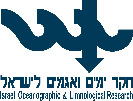Nicholas S. Fisher, Distinguished Professor & Director
Consortium for Inter-Disciplinary Environmental Research,
School of Marine and Atmospheric Sciences,
Stony Brook University, Stony Brook, NY, USA
Ph.D., State University of New York at Stony Brook, 1974
Prof. Fisher laboratory's research focuses on the interactions of metals and metalloids with marine organisms. This work is aimed at evaluating the bioavailability and fate of metals, including important long-lived radionuclides associated with nuclear wastes in marine organisms. The laboratory's research examines various processes regulating the uptake and trophic transfer of these contaminants in marine food webs.
Some of this work has explored the nature of binding of metals to diverse types of particles and the influence these have on the extent to which the metals are in a biologically available form. The effects of chemical and phase partitioning of metals on their bioaccumulation in marine food webs are assessed. Particle types considered include abiotic particles such as suspended sediments (e.g., iron oxides with and without organic coatings, clay particles, calcite crystals) and living particles (e.g., phytoplankton cells, bacterioplankton). As well, research has focused on the adsorption/desorption of metals to biogenic detrital matter and the influence this material can have on the vertical flux and geochemical cycling of metals in diverse oceanic regimes, including open ocean and continental shelf waters. Many of these activities are conducted in coordination with Stony Brook University's Center for Environmental Molecular Science (CEMS).
Prof. Fisher also been active in quantifying the transfer of metals from one trophic level to another in marine food chains and have developed a bioenergetic-based kinetic model to assess the bioaccumulation, including specific uptake pathways, of metals in marine organisms. These studies have considered diverse marine herbivores and carnivores, including species that are used as bioindicators of coastal contamination. Experimental studies have assessed rate constants for metal accumulation and release from organisms under different environmental conditions, and the results are applied to understanding processes in specific environmental regions. Recently, he has been working with food webs in the Arctic, the Mediterranean, San Francisco Bay, and the Equatorial Pacific. Additionally, the research has related bioaccumulation and toxicity of select metals to phytoplankton and zooplankton in marine and freshwater environments. These studies emphasized physiological and biochemical responses to sub-lethal concentrations of metals.
Fisher's group has also been active in developing the capability of analyzing the trace element composition of individual plankton cells using synchrotron-based x-ray fluorescence microscopy. This method is now being applied toward understanding elemental stoichiometries in different types of plankton cells and in evaluating biological responses to varying iron concentrations. They are currently analyzing Pacific blue fin tuna and other Pacific animals for the presence of radionuclides that have been released from the Fukushima nuclear reactor in Japan, in part to evaluate public health risks and in part to use cesium radioisotopes to trace migratory patterns. They are also analyzing these fish for mercury and comparing tissue concentrations with those in Atlantic blue fin tuna.
Since October 2006, Prof. Fisher has served as the Director of Stony Brook University's Consortium for Inter-Disciplinary Environmental Research. He has also been active in helping to coordinate biogeochemical research in the Mediterranean and Black Seas, in conjunction with CIESM, through specialized workshops and conferences.




